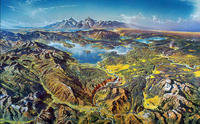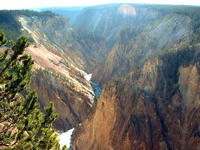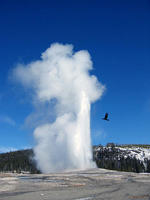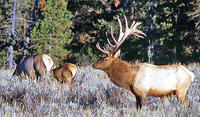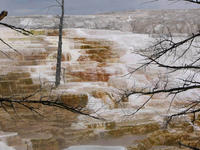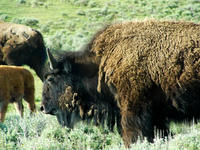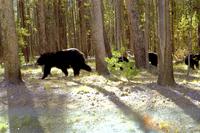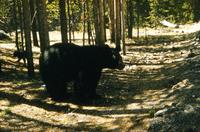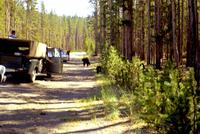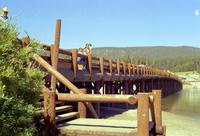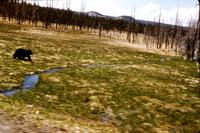You are in: North America -> United States of America -> Yellowstone National Park, and traditional search or Image Gallery will yield results of this site only
Yellowstone National Park
| Site number: | 28 |
|
| Type of site: | Natural | |
| Date: | 1872 | |
| Date of Inscription: | 1978 | |
| Location: | North America, USA, Northwesern State of Wyoming,small adjacent areas in states of Montana and Idaho | |
Up to 75 images are shown here. Click on each for more details or on Image Gallery for more images.
Six official UN languages:
Arabic,
Chinese,
English,
French,
Russian,
Spanish
Other languages: Bulgarian, Catalan, Croatian, Czech, Danish, Dutch, Estonian, Finnish, German, Hebrew, Hungarian, Italian, Japanese, Korean, Lithuanian, Norwegian-bokmål, Polish, Portuguese, Romanian, Serbian, Slovak, Slovenian, Swedish, Vietnamese
Other languages: Bulgarian, Catalan, Croatian, Czech, Danish, Dutch, Estonian, Finnish, German, Hebrew, Hungarian, Italian, Japanese, Korean, Lithuanian, Norwegian-bokmål, Polish, Portuguese, Romanian, Serbian, Slovak, Slovenian, Swedish, Vietnamese
| Description: | Exactly 96% of the 9,000 sq. km natural forest of Yellowstone National Park lies in Wyoming, whilst 3% are in Montana and 1% in Idaho. Yellowstone holds half of all the world's identified geothermal features, boasting over 10,000 examples. The world's leading concentration of geysers (more than 300 geyers, or 2/3 of the whole planet’s amount) are also present here. Yellowstone, Established in 1872, is just as known for its wildlife, such as grizzly bears, wolves, bison and wapitis. --WHMNet paraphrase from the description at WHC Site, where additional information is available. | |
| Yellowstone National Park became first national park in the world on March 1, 1872. Located mostly in the U.S. state of Wyoming, the park extends into Montana and Idaho. The park is known for its wildlife and geothermal features, especially Old Faithful Geyser, one of the most popular areas in the park. Native Americans have lived in the Yellowstone region for at least 11,000 years. The region was bypassed during the Lewis and Clark Expedition in the early 1800s. Aside from visits by mountain men during the early to mid-1800s, organized exploration did not begin until the late 1860s. The U.S. Army was commissioned to oversee the park just after its establishment. In 1917, administration of the park was transferred to the National Park Service, which had been created the previous year. Hundreds of structures have been built and are protected for their architectural and historical significance, and researchers have examined more than 1,000 archaeological sites. Yellowstone National Park spans an area of 3,472 square miles (8,987 km²), comprising lakes, canyons, rivers and mountain ranges. Yellowstone Lake is one of the largest high-altitude lakes in North America and is centered over the Yellowstone Caldera, the largest supervolcano on the continent. The caldera is considered an active volcano; it has erupted with tremendous force several times in the last two million years. Half of the world's geothermal features are in Yellowstone, fueled by this ongoing volcanism. Lava flows and rocks from volcanic eruptions cover most of the land area of Yellowstone. The park is the centerpiece of the Greater Yellowstone Ecosystem, the largest remaining, nearly-intact ecosystem in the Earth's northern temperate zone. Hundreds of species of mammals, birds, fish and reptiles have been documented, including several that are either endangered or threatened. The vast forests and grasslands also include unique species of plants. Grizzlies, wolves, and free-ranging herds of bison and elk live in the park. Forest fires occur in the park each year; in the large forest fires of 1988, nearly one third of the park burned. Yellowstone has numerous recreational opportunities, including hiking, camping, boating, fishing and sightseeing. Paved roads provide close access to the major geothermal areas as well as some of the lakes and waterfalls. During the winter, visitors often access the park by way of guided tours that use either snow coaches or snowmobile. Yellowstone was designated an International Biosphere Reserve on October 26, 1976, and a United Nations World Heritage Site on September 8, 1978. --Wikipedia. Text is available under the Creative Commons Attribution-ShareAlike License. | ||
| Source: | http://whc.unesco.org/en/list/28 | |
| Source2: | http://whc.unesco.org/en/list/28/video | |
| Reference: | 1. UNESCO World Heritage Center, Site Page. | |


